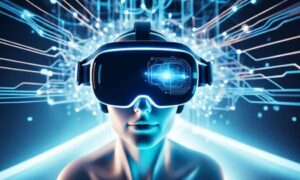In the world of healthcare, technology has been playing an increasingly important role in revolutionizing how acute medical care is delivered. Innovations in medical technology have led to new treatments and medical devices that have dramatically improved patient outcomes.
From diagnostics to treatment options, new technologies are changing the face of healthcare delivery. Innovations such as robotics, artificial intelligence, big data, and the Internet of Things enable healthcare professionals to provide faster, more efficient, and high-quality patient care.
Anthony Misitano of PAM Health explores how technology transforms acute medical care.
Telemedicine And Remote Monitoring
Telemedicine is a new healthcare service that allows doctors and healthcare professionals to provide clinical services remotely. With the help of telemedicine, healthcare professionals can monitor patients’ health, provide real-time consultations, and diagnose patients from remote locations, helping to improve access to healthcare services.
Remote monitoring is another telemetric healthcare service that allows healthcare providers to monitor a patient’s health condition remotely. Remote monitoring typically uses portable devices such as smartwatches or other wearable devices that connect to a healthcare provider’s system in real-time.
The devices keep track of a patient’s vitals, notifying healthcare providers if there are any concerning changes in a patient’s health condition.
Robotics
Robotics is another area of technological innovation that is transforming acute medical care. Surgical robots have been around for some time, but they continue to improve and evolve, making surgeries more efficient and precise.
Robotic-assisted surgeries offer several benefits, including reduced pain and scarring, faster recovery times, and lower incidence of complications. Robots are also used in patient care, monitoring patients’ vital signs and alerting healthcare professionals to changes.
Electronic Health Records
Electronic Health Records (EHRs) have revolutionized how healthcare providers store and access medical records. Unlike traditional paper medical records, EHRs can be accessed from anywhere simultaneously. EHRs contain a patient’s complete medical history and have the potential to improve medical diagnoses and treatments.
With EHRs, healthcare providers can quickly and easily access a patient’s medical history, current drug prescriptions, dosage, allergies, surgeries, and other medical procedures. As a result, EHRs have helped reduce errors in medical records and improved healthcare providers’ ability to provide accurate diagnoses and treatments.
3D Printing And Medical Imaging
3D printing has become an innovative medical tool, allowing healthcare providers to print prosthetics, implants, and other medical devices. 3D printing can be used to build accurate anatomical models using data obtained from medical imaging, enabling healthcare professionals to visualize complex medical procedures.
Medical imaging, such as MRI and CT scanning, has also transformed critical care by allowing healthcare providers to visualize internal body structures. By providing clear, concise, and detailed images, healthcare providers can locate and diagnose conditions that may have previously gone undetected.
Big Data
The collection and analysis of big data are transforming acute medical care. By analyzing large data sets, healthcare professionals can identify patterns and trends that would not otherwise be recognizable.
Researchers can use big data to identify new treatments, predict disease outbreaks, and develop personalized treatment plans. With advancements in data analytics, healthcare systems can improve patient care by identifying high-risk patients, detecting early signs of disease, and providing more targeted and effective treatments.
Wearable Technology
Wearable technology is another technological innovation that is transforming acute medical care. Wearable devices such as smartwatches, fitness trackers, and remote monitoring devices are increasingly used to collect patient data.
This data can then be analyzed by healthcare professionals to detect early signs of disease and to monitor chronic conditions. Wearable technology is also helping patients take an active role in their healthcare by providing instant access to their vital signs.
Artificial Intelligence (AI)
AI is revolutionizing the way we deliver healthcare. AI technologies are being used to develop predictive algorithms to help identify patients at high risk of developing acute medical conditions. This technology can also develop personalized treatment plans based on a patient’s genetic and clinical profile.
AI-based diagnostic tools can help to improve the speed and accuracy of diagnoses, and chatbot technology can provide patients with 24/7 access to healthcare advice and support.
Final Thoughts
Innovations in acute medical care are transforming healthcare delivery and improving patient outcomes, says Anthony Misitano. Technology is increasingly essential in healthcare, providing faster, more efficient, high-quality patient care.
Telemedicine, robotics, big data, wearable technology, and AI are all areas of technological innovation that are changing the face of healthcare delivery. With the continued advancements in healthcare technology, the future of healthcare delivery looks bright, and we can expect many more exciting developments in the years to come.


































